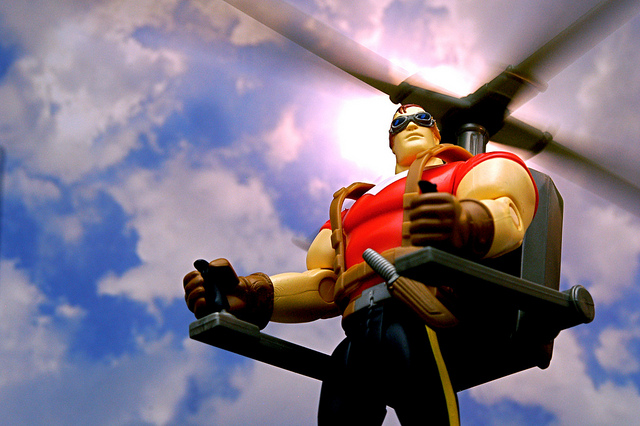Jungian branding for beginners


“You have to make a call about whether clients will appreciate Jungian branding.” Pete Blake of Adult agency.
Jungian branding. So what does that mean, exactly? Branding where you analyse your client’s dreams to choose the colour of the logo? Where you place the product in broad daylight to see what kind of shadow it casts? Or perhaps where you fling open the doors to your unconscious mind and let that decide the new direction for your brand?
According to Peter Blake, it’s none of the above. Pete has been a fan of Jung for a while and discovered a way to combine this interest with his day job as Strategy Director of Adult, an agency that delivers brand strategy, identity and messaging for start ups.
“The whole idea can feel quite esoteric and difficult to get your head round,” he admits. “Not many agencies are expressly using it. But it can be a wonderful way for getting under the skin of the obvious.”
Why we seek meaning from brands
Originally, branding meant a physical mark on cattle to denote ownership. In the same way, brands were originally about ownership. Markets were uncluttered and products were distinguished through their specific features and benefits.
But times have changed. “Competitors can now match any innovation you come up with in record speed,” says Pete. “So differences in features or benefits no longer stand out in the market, whether you’re talking about trainers or coffee or soap or charities. It’s a very crowded place.”
“Today, people use brands to express their identity, as part of the fabric of their lives. So brands need to differentiate themselves by creating deeper meanings and more profound relationships with consumers. For example, Nike allows people to play out the idea of being exceptional or heroic in their running. When you put on a pair of Nike trainers, you’re putting on the clothes of exceptional endeavour. The brand’s name comes from Nike, the Greek goddess of victory, so it is clearly tapping into a story that has deep and ancient roots.”
The 12 archetypes
“For Jung, archetypes are the way in which the human psyche is hard-wired, regardless of geography, culture and time,” says Pete. They play a remarkable role in our lives.”
Pete recommends starting your Jungian branding education with The Hero and the Outlaw: Building Extraordinary Brands through the Power of Archetypes by Margaret Mark and Carol S Pearson. This book takes the Jungian concept of ‘archetypes’ – mythical figures – and applies them to brands. It covers a dozen essential archetypes. Here’s a summary of the goal of each figure and a brand that typifies the archetype.
- The Innocent – wants to be happy e.g. Innocent (of course!).
- The Explorer – aims to experience a more fulfilling life e.g. Jeep.
- The Sage – wants to use intelligence to understand the world e.g. the BBC.
- The Hero – aims to prove him or herself through courageous action e.g. Nike.
- The Outlaw – seeks revenge or revolution e.g. Harley-Davidson.
- The Magician – wants to make dreams come true e.g. Disney.
- The Regular Guy / Gal – wants to fit in with others e.g. IKEA.
- The Lover – seeks to be in relationship with others e.g. Haagen-Daaz.
- The Jester – wants to lighten up the world e.g. Motley Fool.
- The Caregiver – aims to help and protect others e.g.Volvo.
- The Creator – wants to bring a vision to life e.g. Apple.
- The Ruler – aims to create a successful family or company e.g. IBM.
“Archetypes help brands sell dreams,” says Pete. “For example, Harley Davidson don’t sell motorbikes,” says Pete. “They sell the opportunity for middle-aged men to ride through small towns at the weekend and feel like outlaws.”
Brands such as British Airways or IBM fit the ‘Ruler’ archetype with their links to safety and security. Beauty products often come under the ‘Caregiver’ archetype, while Coca Cola is the classic ‘Innocent’ brand. “Coke has its strongest cultural influence when it sticks to advertising that’s true to its innocent branding,” adds Pete. “The hilltop ‘I’d like to teach the world to sing’ advert is the perfect example of that.”
Rather wonderfully, Cillit Bang is a Magician, able to bring about a magical transformation for consumers.
How to use archetypes in business
Pete admits that not every type of business will want to embark on a Jungian branding approach. “You have to make a call about whether clients will appreciate it,” he says. “Once I thought a publishing company would understand the concept, but it really didn’t work. On the other hand, this method was a great success for a theatre company, which had an intuitive understanding of the archetypes. It gave them great clarity to realise that their company embodied the values of the Hero, the Explorer and the Sage.”
With his agency, Adult, Pete uses this process to take clients on a journey and find a way for them to shine. “Most of our clients are new technology start ups,” he explains. “They’re often shy about what makes them amazing and tend to hide their light under a bushel. We use the archetypes as a framework to lead them through a process and help them tell their story in a way that’s real and meaningful for them.”
Crucially, Pete says that Jungian branding isn’t about invention, but about diagnosis. “It’s not about affixing meaning to a brand. It’s about helping companies to understand what’s true about them as people and as a business, and remaining faithful to it.”
